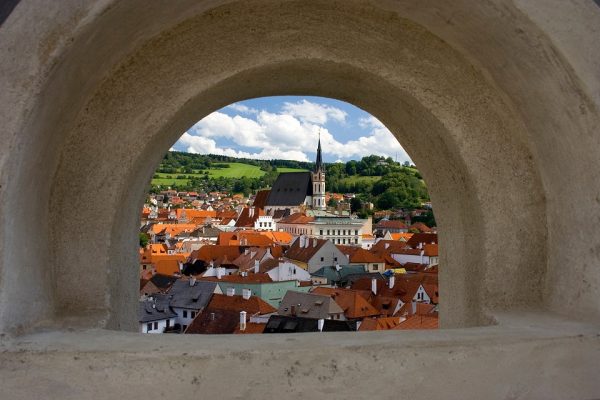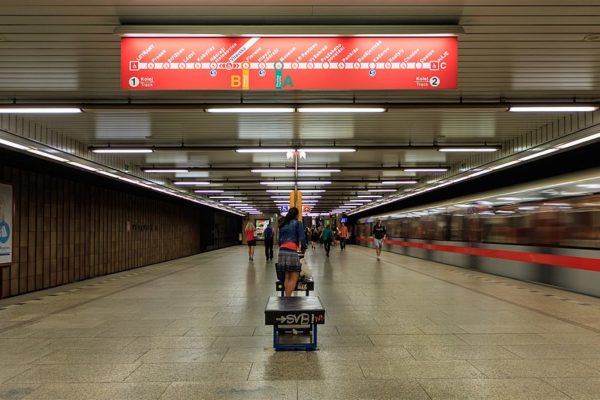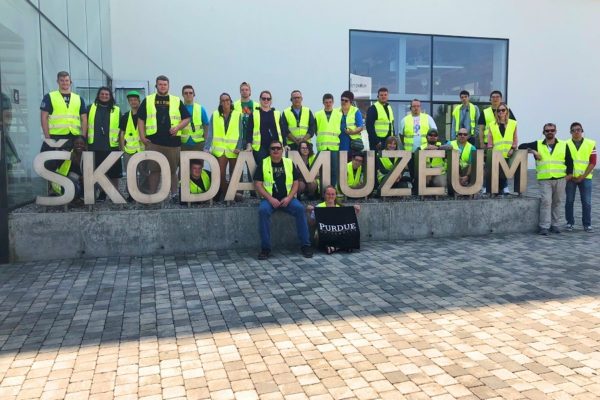The Church of Saint Wenceslas (Czech: Kostel sv. Václava) is a Roman Catholic church in Vršovice in Prague 10, Czech Republic. The church was built in 1930 as a commemoration of the 1,000th anniversary of the death of St. Wenceslas.
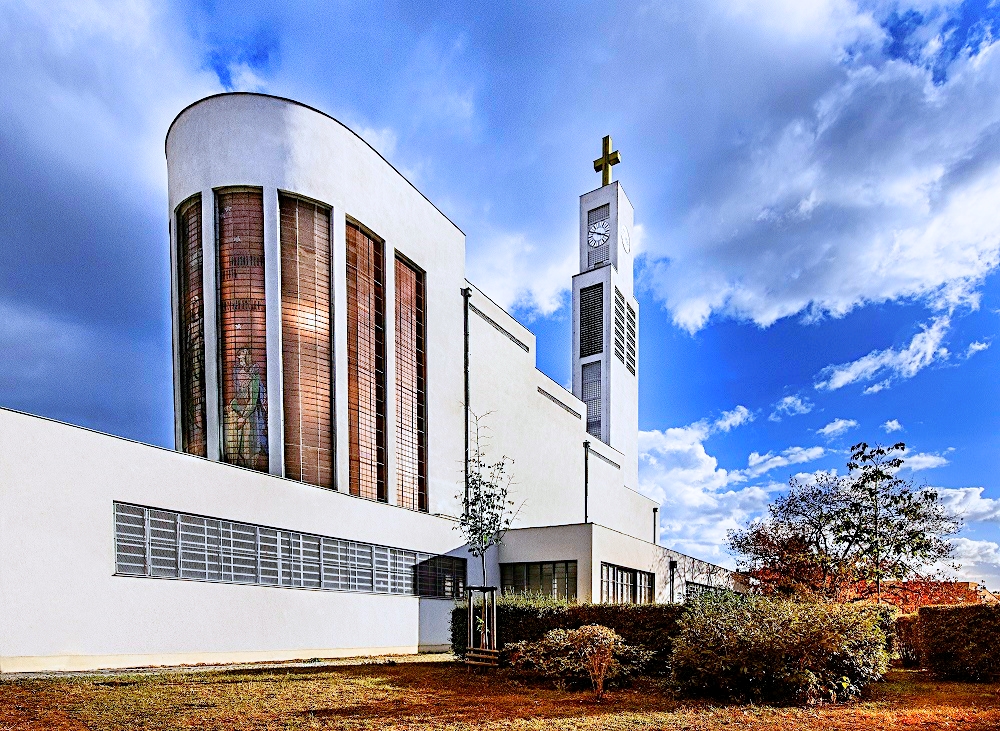
This was one of three new buildings constructed in 1929 in Prague inspired by the 1000th anniversary of the death of St. Wenceslas.
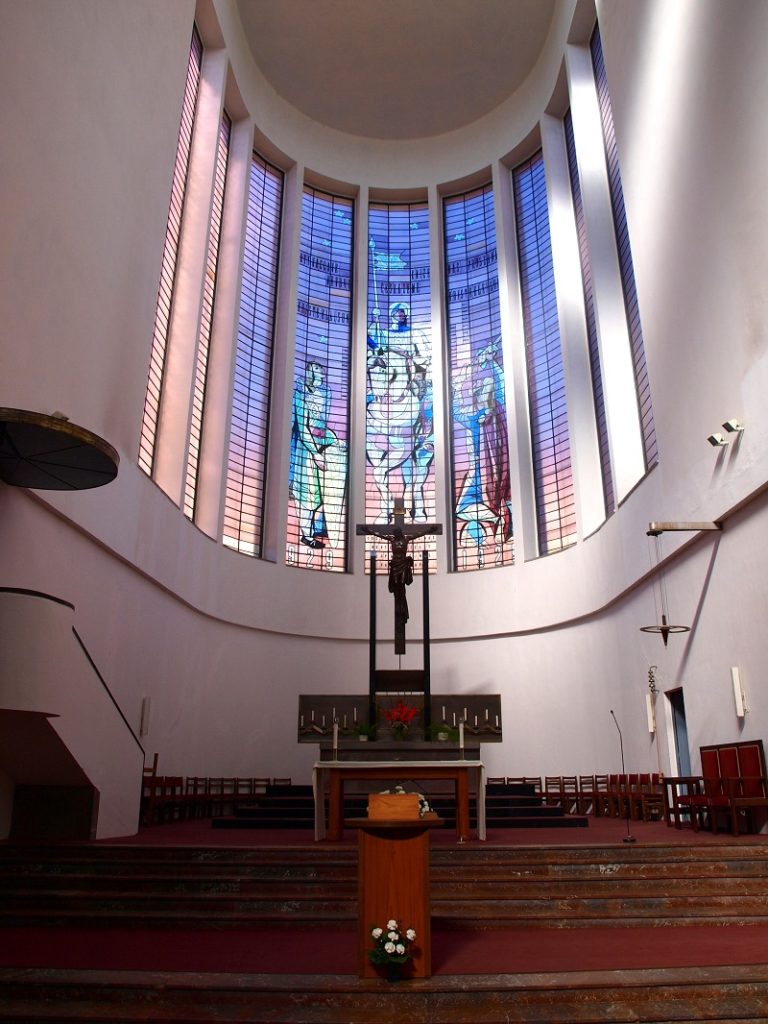
This is the Saint Wenceslas who features in the Christmas carol “Good King Wenceslas”, which was based on a poem written by Václav Alois Svoboda. John Mason Neale wrote the lyrics for the English version of this popular Christmas carol in 1853. He based them upon a translation of a story written in 1847 by Czech nationalist poet, Václav Alois Svoboda. (The name Václav is, in fact, Wenceslas in its original Czech.)
Good King Wenceslas
Good King Wenceslas looked out
On the Feast of Stephen,
When the snow lay round about
Deep and crisp and even,
Brightly shone the moon that night
Though the frost was cruel,
When a poor man came in sight
Gathering winter fuel.
“Hither, page, and stand by me,
If thou know’st it, telling
– Yonder peasant, who is he?
Where and what his dwelling?”
“Sire, he lives a good league hence
Underneath the mountain,
Right against the forest fence
By Saint Agnes’ fountain.”
“Bring me flesh and bring me wine
Bring me pine logs hither,
Thou and I will see him dine
When we bear him thither.”
Page and monarch, forth they went
Forth they went together,
Through the rude wind’s wild lament
And the bitter weather.
“Sire, the night is darker now
And the wind blows stronger,
Fails my heart, I know not how,
I can go no longer.”
“Mark my footsteps, my good page,
Tread thou in them boldly,
Thou shalt find the winter’s rage
Freeze thy blood less coldly.”
In his master’s steps he trod
Where the snow lay dinted,
Heat was in the very sod
Which the Saint had printed.
Therefore, Christians, All, be sure
– Wealth or rank possessing –
Ye who now will bless the poor
Shall yourselves find blessing !
Read more about St. Wenceslaus Day.
Read more about Good King Wenceslas and his Descendant (Charles IV).
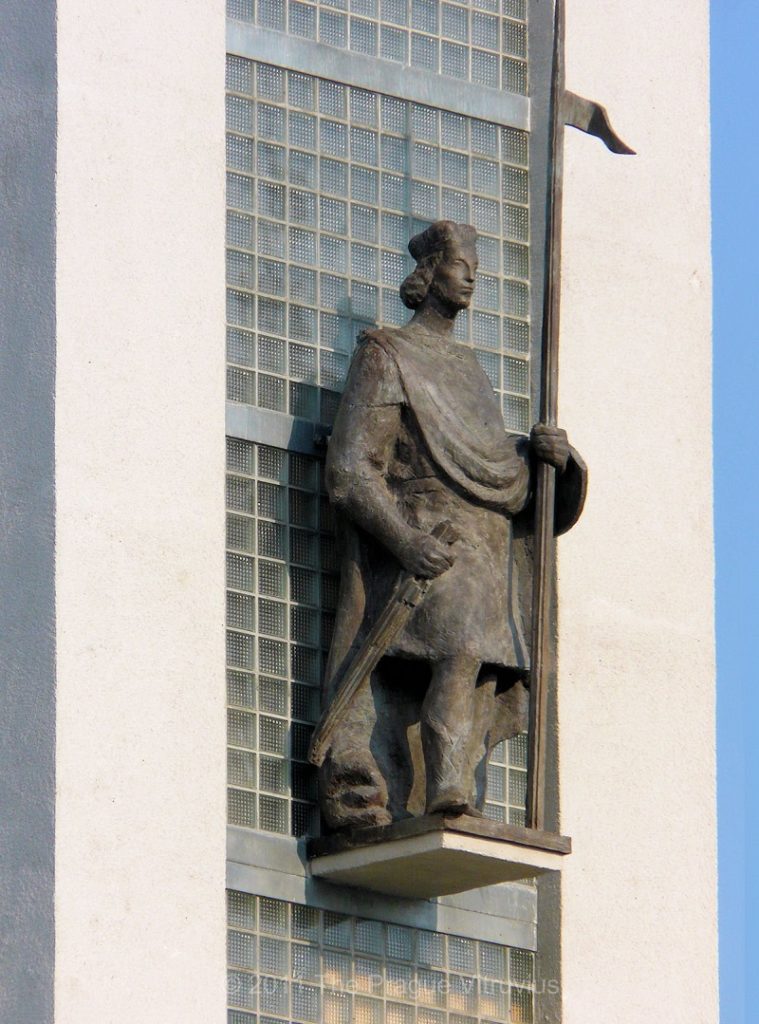
Yes, Wenceslas was real. He lived from 907 to 935, was the first generation of his family to be Christianized, and became the Duke of Bohemia. Known for his piety and kindness, still he came to a gory end at the hands of his brother Boleslaw (urged on by their mother). A cult of Wenceslas spread quickly after his death – later seen as a martyrdom – and he became a prime example of what in the High Middle Ages would be called rex justus – the righteous king – a monarch whose power derives from moral goodness not brute force. He is the patron saint of The Czech Republic, where he is known as Svatý Václav (Saint Wenceslas).
The most expensive construction for Wenceslas’s commemoration in Prague was the completion of the medieval cathedral, but the Catholic Church also decided to build two new churches. One church was to be built at Jiřího z Poděbrad – the Church of the Most Sacred Heart of Our Lord by Jože Plečnik and this one, which was to be built on a former cemetery in Svatopluk Čech square in Vršovice.
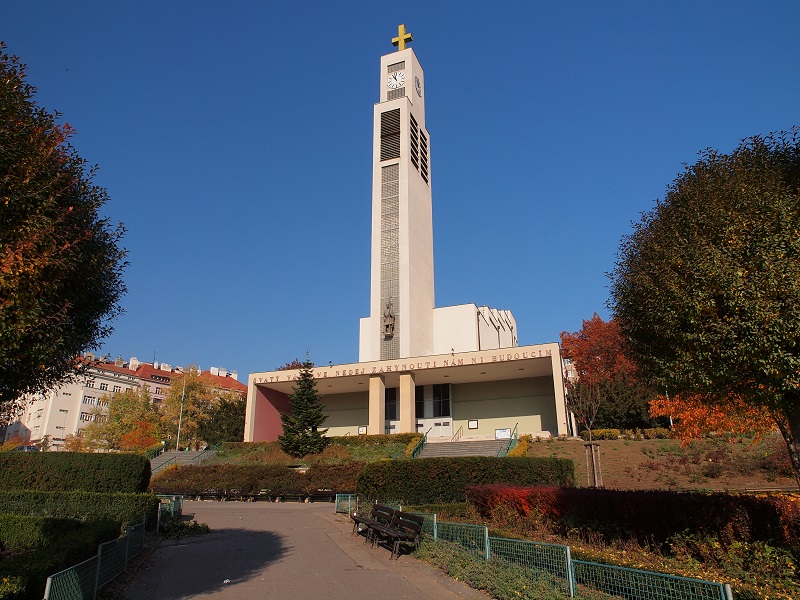
There was already a church in Vršovice dedicated to St. Nicholas whose history went back, via several buildings on the site, to the 11th century, but this was to be a new church. The idea of a new church had started in 1864 but the process was slow and it took till 1902 to establish a committee to create a new church for Vršovice.
The design of the new church was settled by competition with over 50 entries being short-listed to three. Czech architect Josef Gočár was the winner with a daring Constructivist design.
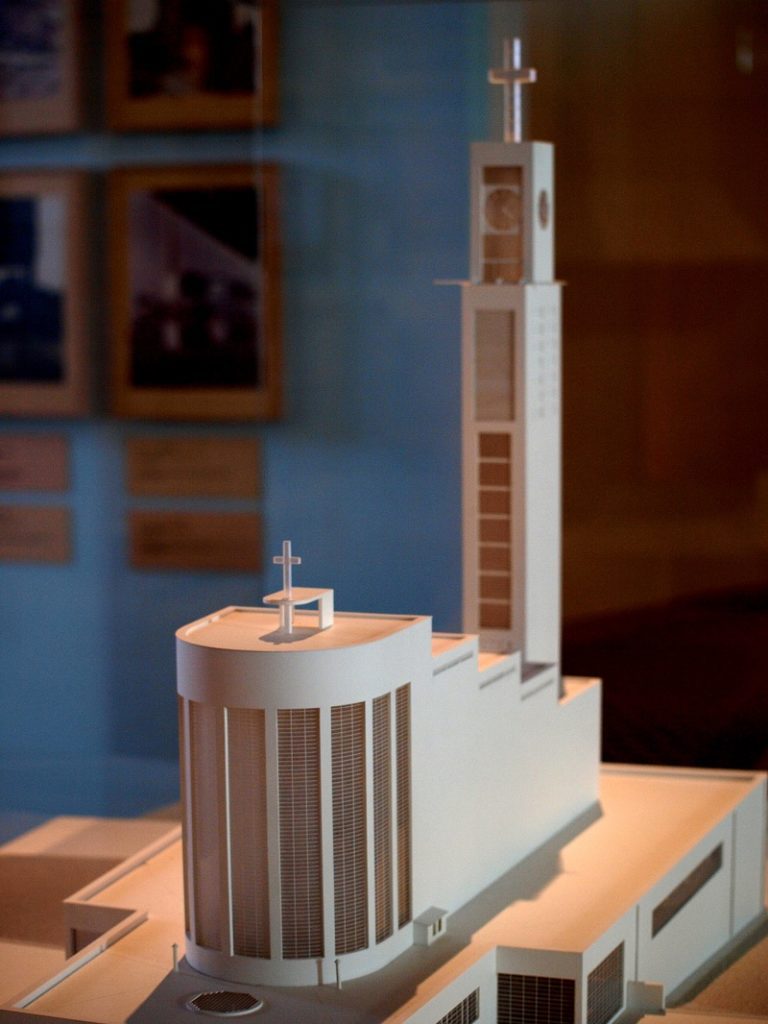
Out of fifty two designs a shortlist of three was reached with the eventual winner being Josef Gocar. His design in the Constructivist style would be built on the gentle slope of Svatopluk Čech Square (Čechovo náměstí), the site of a cemetery until burying ceased in 1930.
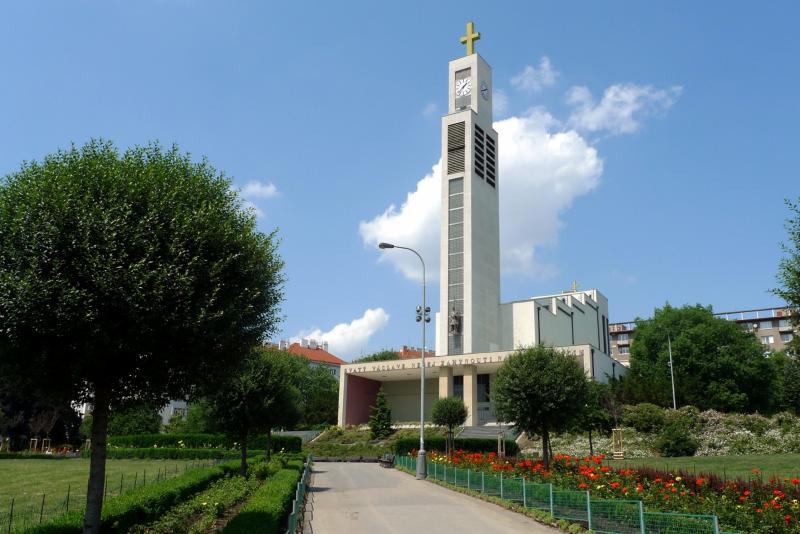
Josef Gočár was born on March 13, 1880 in Semín u Přelouče, and died on September 10, 1945 in Jičín. He was born to a brewer’s family. From 1902 to 1905 he was a student of Jan Kotěra at the School of Applied Arts. After Kotěra’s death, he was appointed professor in 1924 and rector of the Academy of Fine Arts in 1928. From 1911, he was the chairman of the Fine Artists Group and later a member and chairman of the Manes Association of Fine Artists. Together with Pavel Janák, he founded the Prague Art Workshop in 1911. In 1925, he won the Paris Grand Prix and a year later the French Order of the Legion of Honor. He was a member of the Czech Academy of Sciences and Arts and a correspondent member of the Royal Institute of British Architects in London.
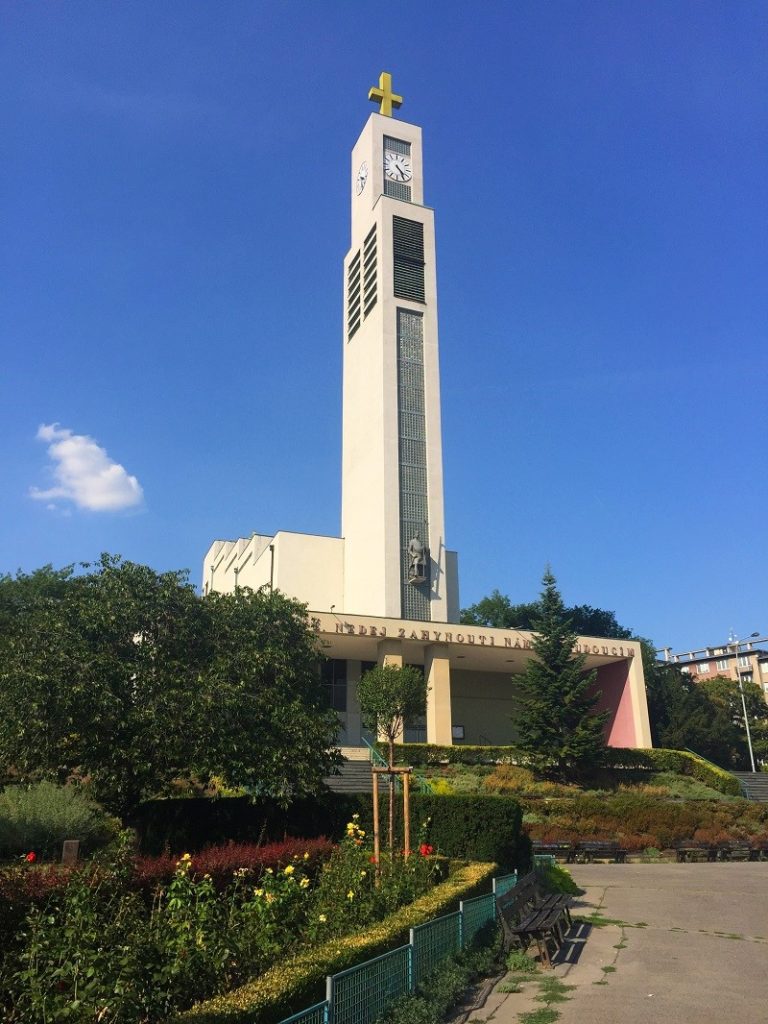
The foundation stone was laid in May 1929 and the church was consecrated by Francis Kordac, the Archbishop of Prague on 21 September 1930. It is said that the overall plan was made by the architect to have a hall that led to the presbytery to cope with the sloping ground.
The building is dominated by the 50-metre tower with a large seven-metre cross as its top. The tower also incorporates a clock and it is possible to climb to this and the top just using a ladder.
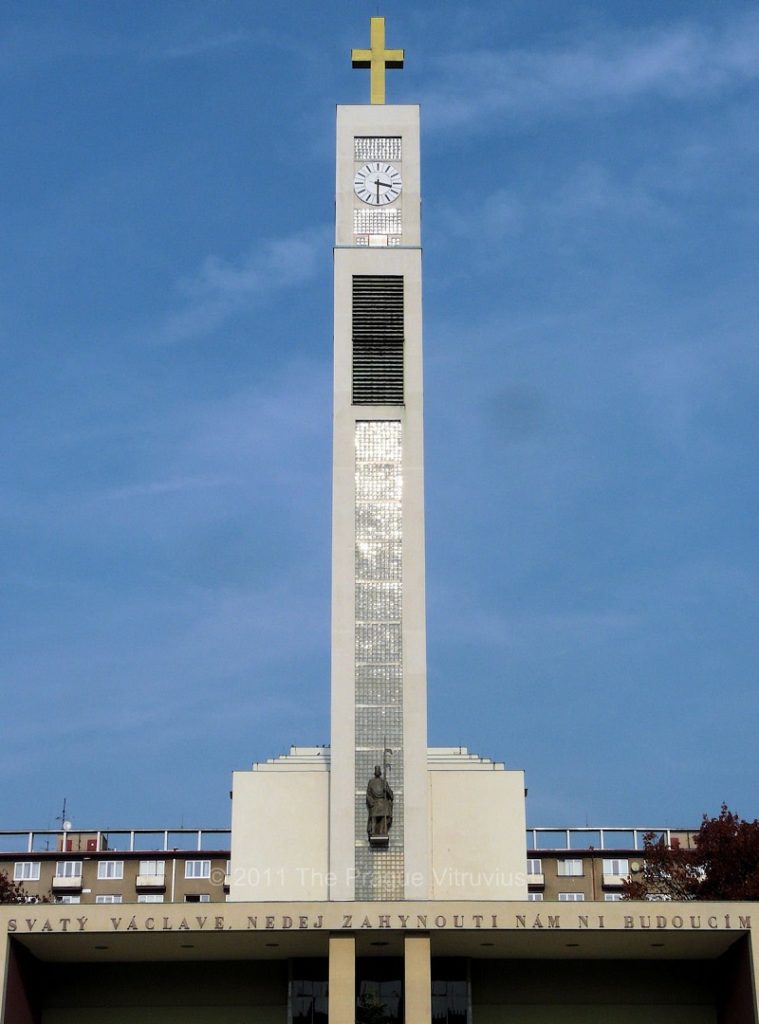
The tower has five bells and the cross at the top is lighted at night.
The windows in the church were replaced in 1998 during a refurbishment. Up to that date the glass chosen was Luxfer glass which is a glass covered in small prisms which directed the light in the architect’s desired direction.
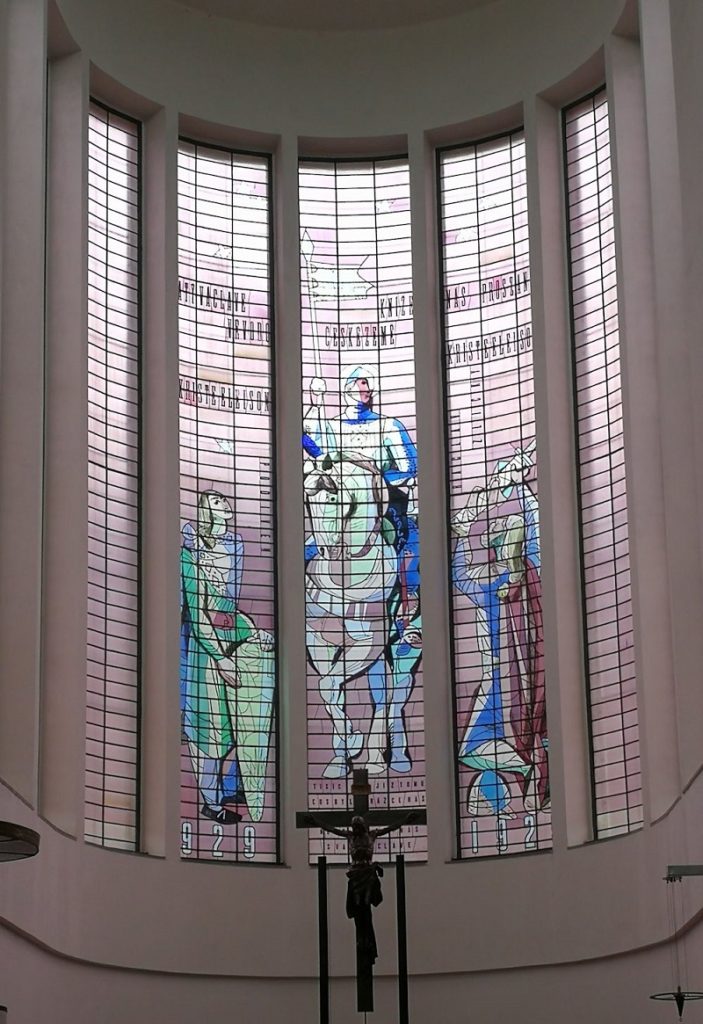
The church was open in September 2012, as part of the European Heritage Days initiative.
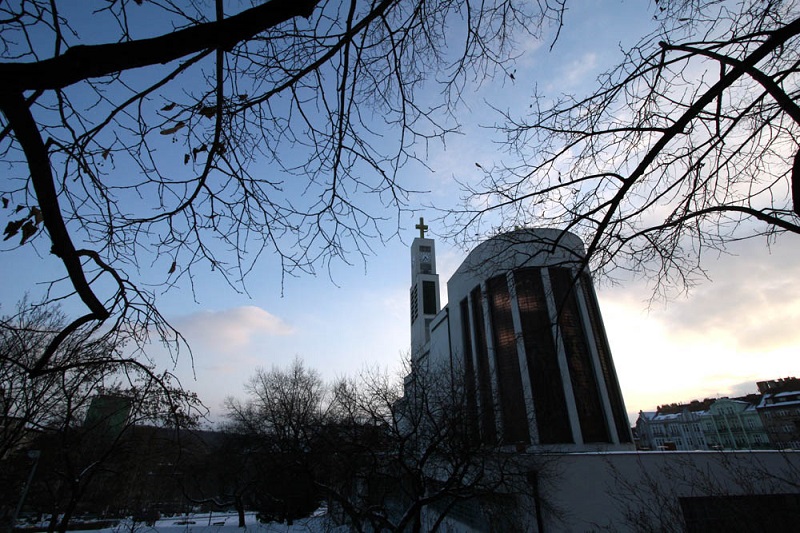
We know that you could spend hours, days, weeks and months finding some of this information yourselves – but at this website, we curate the best of what we find for you and place it easily and conveniently into one place. Please take a moment today to recognize our efforts and make a donation towards the operational costs of this site – your support keeps the site alive and keeps us searching for the best of our heritage to bring to you.
Remember, we rely solely on your donations to keep the project going.
Thank you in advance!
If you have not already subscribed to get TresBohemes.com delivered to your inbox, please use the form below now so you never miss another post.



